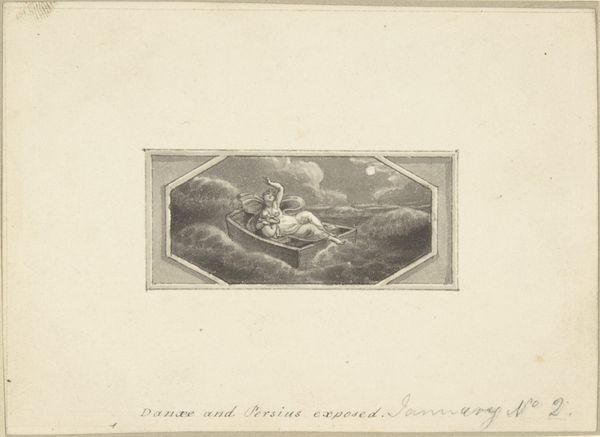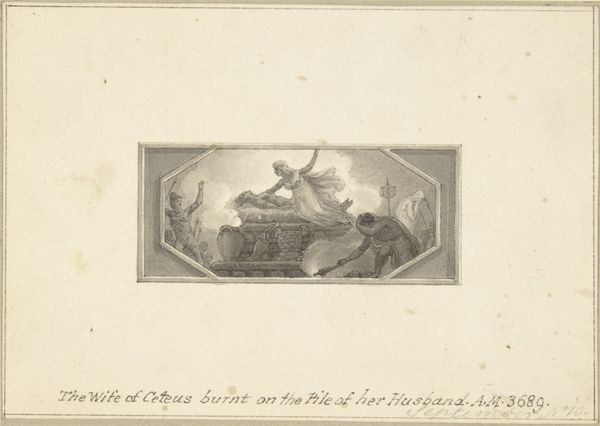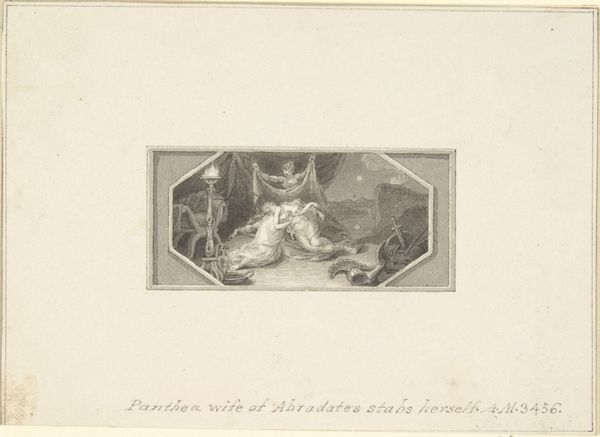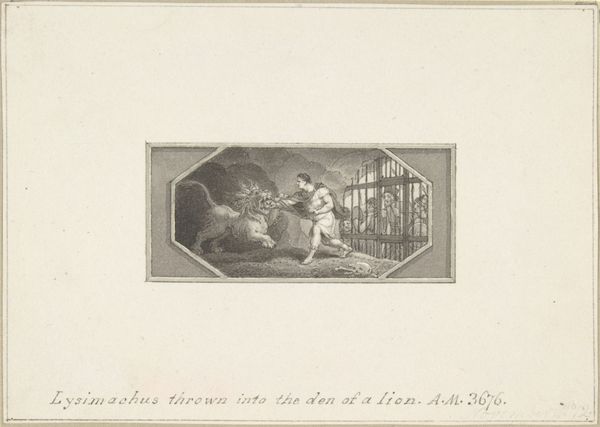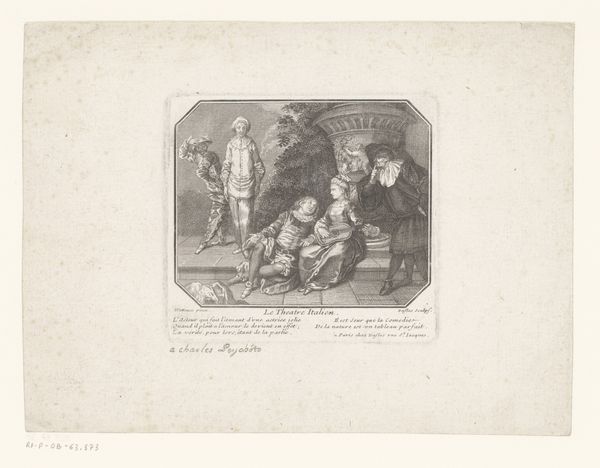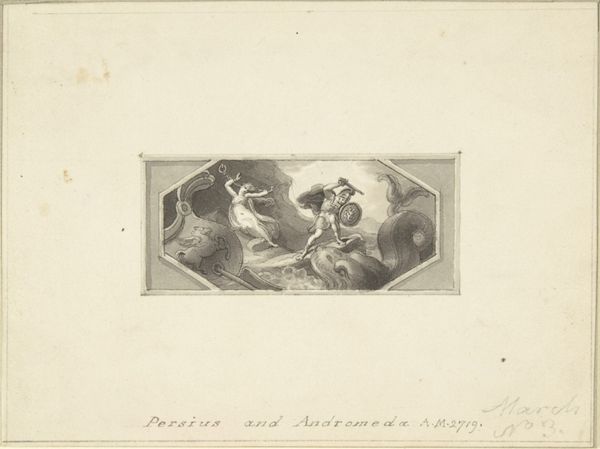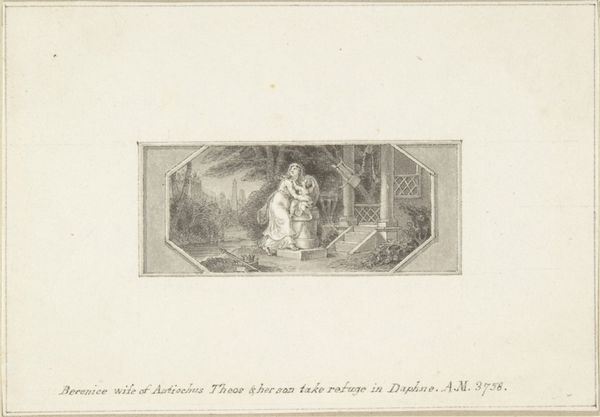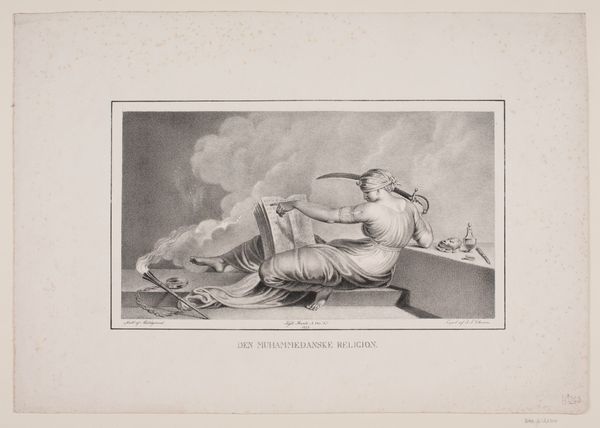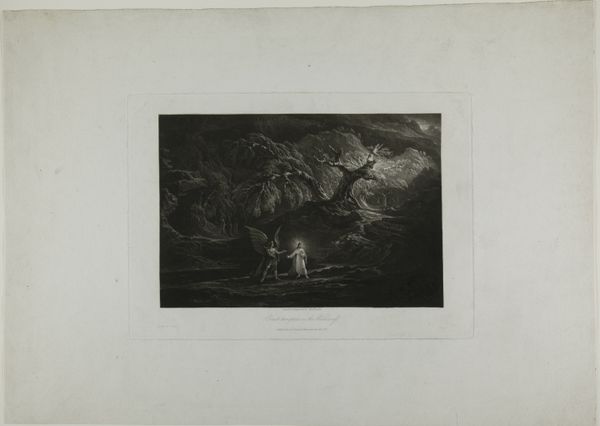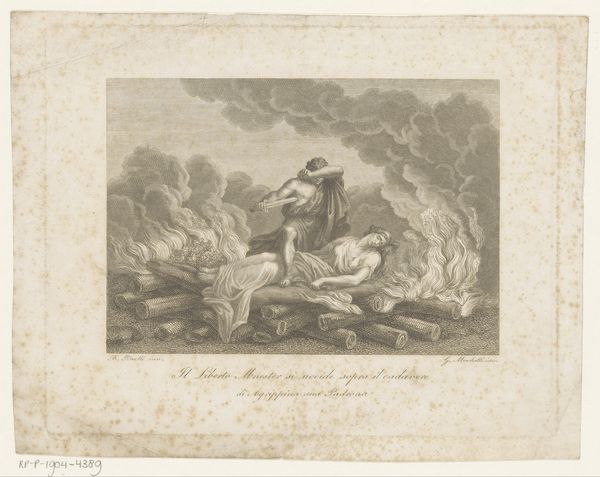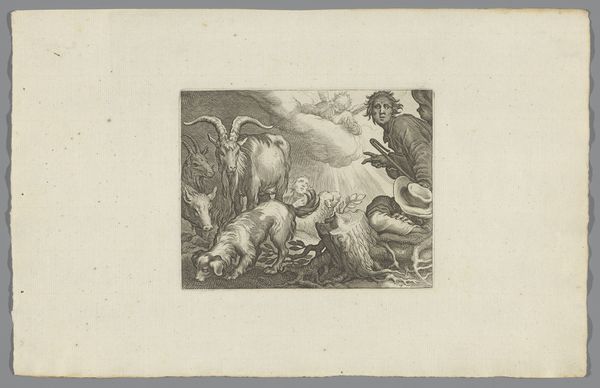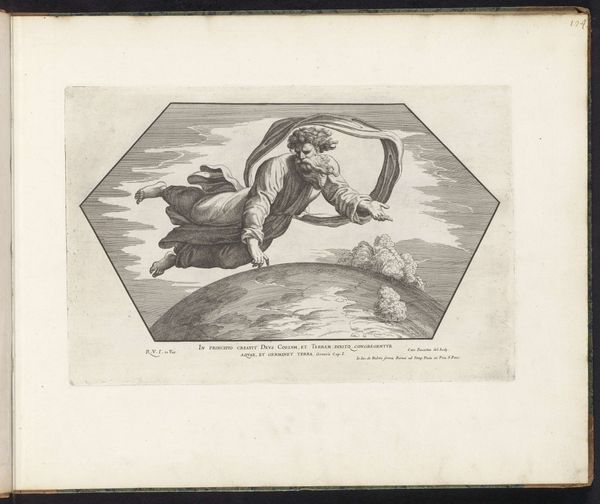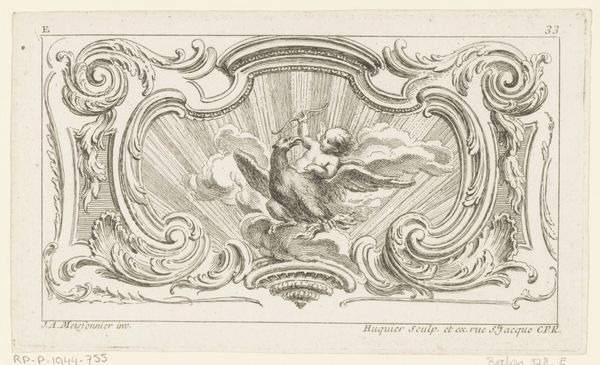
Evadne throws herself on the Funeral Pile of her Husband Capaneus 1790 - 1800
0:00
0:00
drawing, print, engraving
#
drawing
#
narrative-art
# print
#
landscape
#
figuration
#
romanticism
#
history-painting
#
engraving
Dimensions: Sheet: 3 1/4 × 4 5/8 in. (8.3 × 11.7 cm)
Copyright: Public Domain
Editor: This is “Evadne throws herself on the Funeral Pile of her Husband Capaneus,” an engraving made between 1790 and 1800 by Edward Francis Burney. It depicts a dramatic scene. What strikes me is the octagonal frame; it almost feels like a window into another world, but it’s such a meticulously crafted window. How should we look at this piece? Curator: Well, I am interested in the "how" as well. Let's look closely at the lines made by Burney’s engraving. Notice the precise control, creating those fiery, wispy textures, versus the almost mass-produced nature of printmaking itself at this time. How does this tension, between artistic skill and a growing industrial aesthetic, play into the romantic ideals displayed? Think about the story itself, derived from Greek myth. It emphasizes emotional expression above all else, yet it's captured and distributed through the very mechanisms that threaten traditional artistic values and craft. Consider how printmaking allowed this emotional narrative to circulate, reaching broader audiences and potentially democratizing access to art, but also cheapening the artist's labour? Editor: That’s fascinating! It makes me think about how the story's impact changes when it moves from a unique painting viewed by a wealthy patron to an easily reproducible print consumed by the public. Does the message change based on who’s viewing it, considering that context of production and circulation? Curator: Precisely. The very *act* of replicating this intimate and tragic moment speaks volumes about changing social and economic values during the Romantic period. And it challenges us to reconsider any perceived boundaries between “high art” and “popular culture." It speaks volumes about labour, production, and access in an era of revolutionary changes. Editor: That really shifted my perspective. I was initially caught up in the romance of the image, but thinking about how it was made, for whom, and within what economic context is very insightful. Thanks! Curator: It goes to show how deeply interwoven the processes of art making, cultural values, and material realities truly are.
Comments
No comments
Be the first to comment and join the conversation on the ultimate creative platform.
